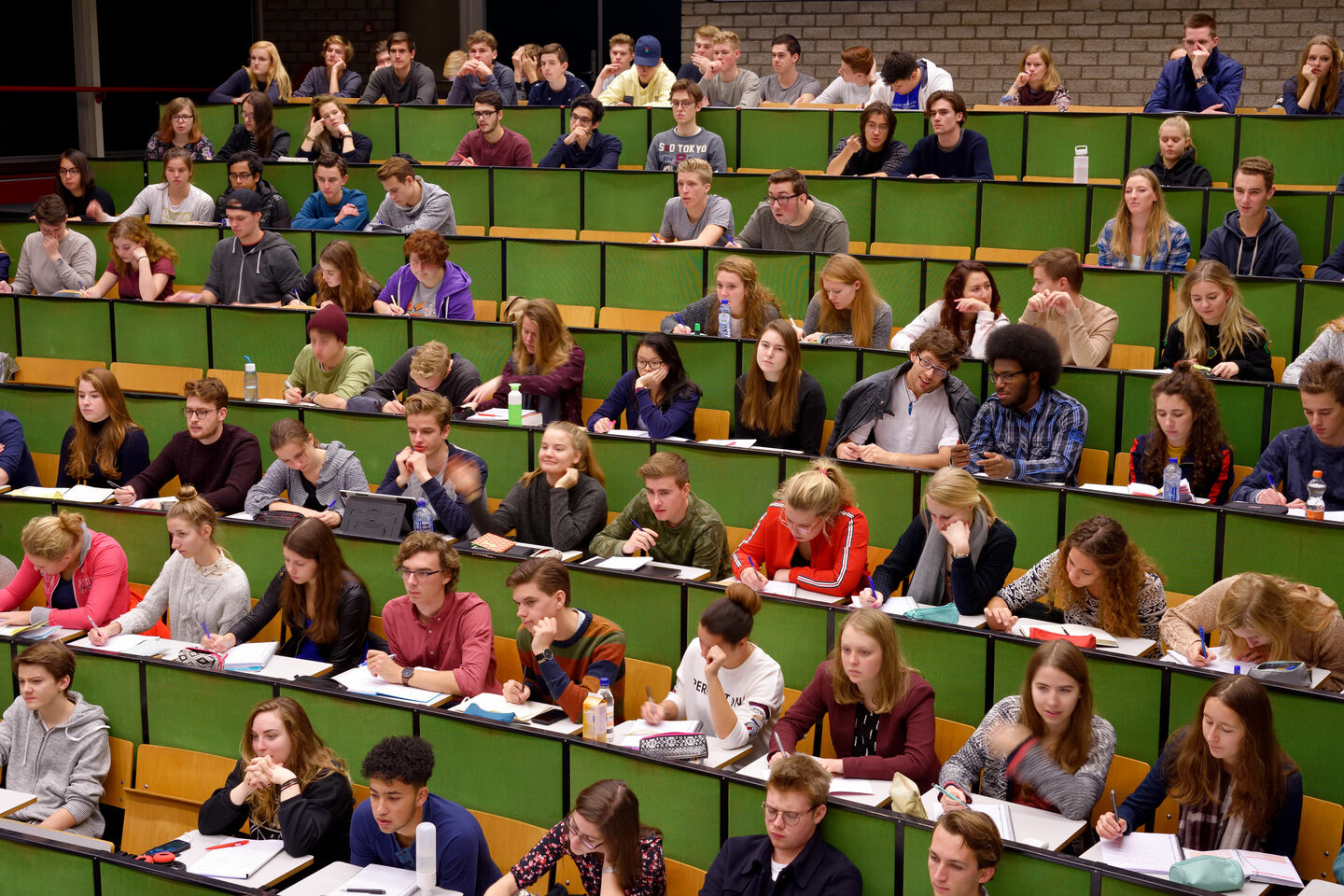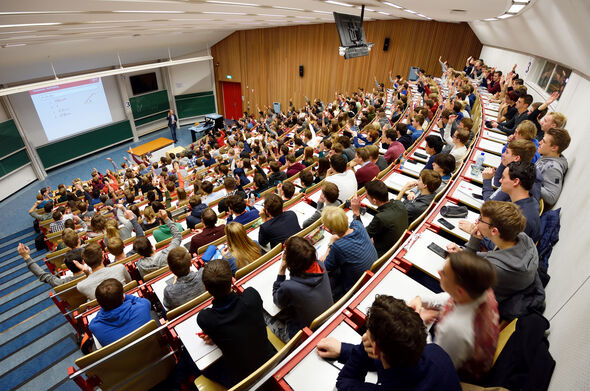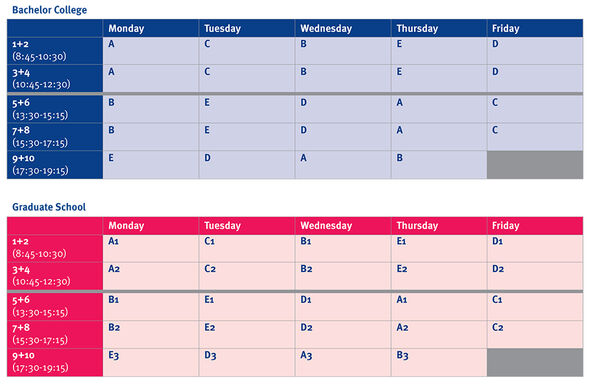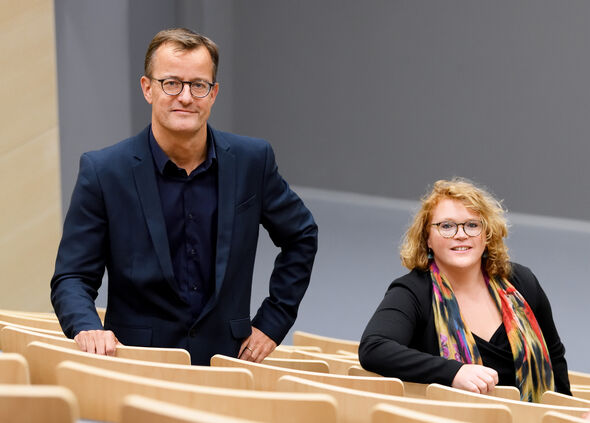
Different lecture times, but why?
Alertness is going to pay dividends as of next week, especially for students and lecturers who have been here a while. Lectures will be at different times, the lunch break will be shorter, the timetable is changing from 8 to 10 hours, and various lectures will be streamed. These measures are being introduced to resolve the acute space shortage at TU/e. Cursor put questions on the issue to Jim Bergmans and Jessica van de Ven, members of the work group tasked with the challenge of finding appropriate solutions.
Couldn't TU/e wait another couple of years before taking these measures?
“The timetable has not been changed in years. The timetablers have managed repeatedly to solve problems, with tactics including digital looping to other lecture halls and timetabling classes in the evening now and again, but some 18 months to two years ago they raised the alarm. The fit was just too tight and a space shortage can't be resolved instantly. But at the same time various program directors and lecturers were telling us, ‘What do you mean we have a problem at TU/e? I see a lot of vacant space, especially on Thursdays and Fridays’.
“Our greatest challenge was to bring the problem to the table in as objective a way as possible. We collaborated with an external agency that was able to demonstrate, by using data-driven simulations, where the pressure points were and how things would play out in future. Everything was taken into account, including a ceiling on student intake for certain programs and construction developments on campus. It was evident from these data that in future the shortage of space, particularly large halls, would make any kind of fit impossible. And this problem would only increase in the coming years if we didn't take action.”
In practical terms, what is changing compared to the last academic year?
“As a permanent change, we have added a ninth and tenth hour to the timetable. Afternoon lectures start at different times and the breaks have been changed. Whereas most lectures used to finish at 17.30 and the tenth hour at 20.00 hrs, as of next week lectures will finish no later than 19.15 hrs. What's more, we have new equipment so we can stream lectures.”
Can't the university simply add a couple of buildings to the campus and solve the problem that way?
“The Executive Board's policy is not to add any more new buildings and not to put money into bricks and mortar, but to invest in more lecturers and other infrastructure. Moreover, at TU/e we stand for small-scale education, and building more large halls is at odds with that. So that wasn't a solution. Nor are we looking to hold lectures off campus. That's costly and for students and lecturers it means journey time. That money can be better spent in another way. In order to create places to study and to keep the small scale, it has been decided to remodel the LaPlace building, creating a building devoted to education with space for 1,600 students and lecturers.”
Why a timetable of 10 hours rather than 12 hours?
“The simulations revealed that large halls in particular are in short supply as well as, to some extent, the smallest halls. The data showed that we wouldn't solve this problem with a 12-hour timetable; conversely that would create even more vacant rooms in a certain segment. It must be said, the 10-hour timetable doesn't provide the complete solution, and that's why other measures are being introduced, including the streaming of various lectures. We are going to estimate more accurately how many of the students enrolled on a given course actually attend the lectures, and monitor how many reserved rooms are actually used.”
So the shortage mainly concerns large halls. Wouldn't smaller scale lectures solve the problem?
“Yes, certainly, but lecturers need time to innovate their teaching and make it small scale or develop it along these lines. The university cannot bring about this change in a couple of years. Partly due to the current level of work pressure. It is up to the departments and lecturers to decide when they can organize their courses in a different way. In the short term, this is certainly not the answer to the space shortage.”
Was it more difficult to create the timetable this year than it was in other years?
“No, on the contrary, it was easier - because we had the ninth and tenth hours and streaming available to us. This academic year we had to timetable 275 Bachelor's courses in quartile 1, that is roughly the same number as in other years. Now 21 courses are timetabled for the ninth and tenth hours. Since we have started using process chains in our education planning, which involves working across TU/e services and departments, we've seen cooperation improve. Moreover, we have started timetabling using expected student numbers rather than the number of enrolled students per course. In short, we are doing more planning whereas in the past we had a stronger focus on timetabling.”
It seems companies now have less time for their lunchtime sessions. Why did you recommend shortening the lunch break by 15 minutes? “We wanted to have the tenth hour finish as early as possible. That is why the lunch break has been shortened and there is no longer an evening break.”
'It disadvantages active students in particular'
Erik van Heijst (student fraction Groep-één) and Tom van Teeffelen (Federation of Study Associations Eindhoven) understand why it was decided to take 15 minutes off the lunch break, but believe that it disadvantages active students in particular. Van Heijst: “Our survey revealed that the majority of students thought it was fine to shorten the break, but those were not the students who are very active and believe it is important to their careers to attend the lunchtime lectures. For companies, having even less time to have their say on a topic makes life difficult and for students it is a pity that they have barely any time to establish contact and ask questions.” Together with the Executive Board, they are looking at possible solutions.
Earlier this year the University Council and the Executive Board clashed on the topic of shortening the lunch break.
Which lectures are being streamed?
“Lectures attended by more than 300 students will always be streamed; as well as any lectures where the students do not all fit into the available rooms. We will start live streaming and recording, fewer lectures will be videoed in the way that we are familiar with, and the digital looping of classes to other lecture halls will disappear. Besides, the equipment we were using was out of date. This coming Monday we will kick off by streaming four courses - they will be posted on videocollege.tue.nl, and on Canvas the live stream will be posted next to the relevant course. We have carried out tests, but it will still be a tense moment seeing whether everything works as it should.”
And are these solutions future-proof, as it were?
“Over the long term the university's vision of education will remain leading; TU/e stands for small-scale education, but that takes time. We foresee the greatest problems arising as of 2019/2020. We expect there to be a space in the lecture hall for every student this academic year, with the occasional exception. Hence, this year the streaming is largely a pilot, but next year it will be even more necessary.

We expect students to choose to watch the stream - often in small groups- rather than going to certain lectures. It will become another style of learning. This preference was also revealed by the streaming pilots held during this past academic year, when students made use of the streams even though there was enough space for them in the lecture hall.
Furthermore, we recently hired a data analyst, who will be monitoring and noting the situation centrally for us. The level of occupancy and use of lecture halls is a subsequent project. Departments will chart which extra halls are available when all non-education-related activities are planned, and lecturers will be requested to report whenever it turns out they need a particular room for fewer hours than expected or not at all.
We are also busy drawing up a plan for how to timetable exams; expectations are that we will have that ready in November. With the Studyhub in the Paviljoen disappearing, this will become a more difficult task.”



Discussion